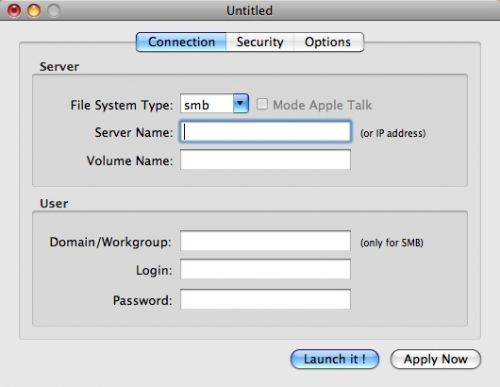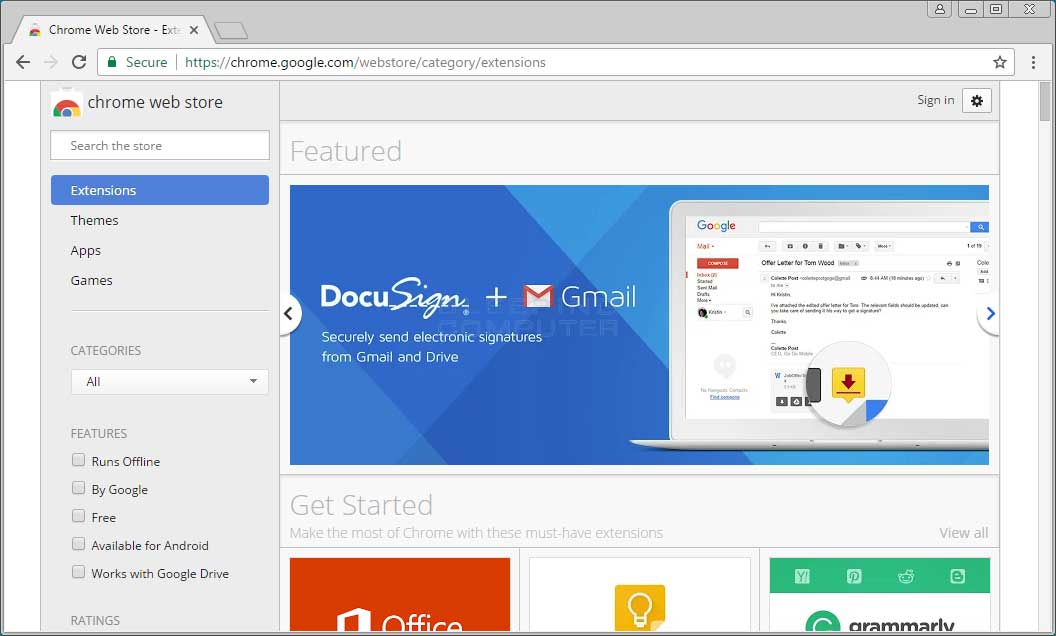| Click here to return to the 'Mount AFP volumes from the terminal' hint |
With autofs you can easily mount network volumes upon first access to the folder where you want to mount the volume. Autofs is available for many OS and is preinstalled on Mac OS X so I show you how I mounted my iTunes library folder using this method. Prepare autofs to use a separate configuration file. Thank you for downloading AutomountMaker para Mac from our software library. The version of the Mac application you are about to download is 1.4.7. This application is distributed free of charge. The software is periodically scanned by our antivirus system. AutomountMaker is distributed free of charge. The software is periodically scanned by our antivirus system. We also encourage you to check the files with your own antivirus before launching the installation. The package you are about to download is authentic. On the other hand, mounting it manually is a good way to emulate the Windows 'reconnect on startup' to networked drives. I can't remember the file offhand, but I already have 'special' mounts for my /Users partition, and I'm sure all of the swap-drive hacks are similar.
apple implemented a mount script called 'mount_afp' located in /sbin. sadly they got no man-page for it, so i cannot imagine what they mean with -o [option]..
mount_afs, mount_nfs, mount_ufs, etc. come from the BSD world. mount(1) is just a wrapper that calls one of these based on how you've set the '-t' flag. It's there for conveinence's sake.
Chris

mount_afp is a program launched by mount when specified witht the afp type. I'd suppose the options are the same as the mount options (for example, read-only access, etc.). From the man page for mount:
If the type is not one of the internally known types, mount will
attempt to execute a program in /sbin/mount_XXX where XXX is re-
placed by the type name. For example, nfs filesystems are mount-
ed by the program /sbin/mount_nfs.
HTH.
mount_afs, mount_nfs, mount_ufs, etc. come from the BSD world. mount(1) is just a wrapper that calls one of these based on how you've set the '-t' flag. It's there for conveinence's sake.
Chris
This is a GREAT tip. The only problem I'm having with it is that it doesn't seem to allow the finder to 'see' the volumes. I have tried messing with the privleges and owner using chown and chmod, but nothing seems to allow me to view the file server in the finder and have it show up like a server would if I mounted it through the finder. Does anyone have any ideas on how to make this happen? I've tried various combinations of chown and chmod, but to no avail.
Thanks
Eric
Run 'disktool -r' after mounting the AFP volume. This causes the Disk Arbitration system
to refresh its volume list, which then causes the Finder to update.
Thanks to Xil for the missing piece!!! now I have a little script that rudimentarily allows me to mount my local server. Theoretically, this could be put in Startup items and run automatically, though I'm planning on adding some checking to make sure that the server is not already mounted. (Right now its blind setup and will give errors). At any rate, I thought I'd pass it on to anyone who might be interested. Basically, this is a perl script that can be created by naming it according to the server you attach to (mine is called 'homemount' .) So, copy the following, then go to the unix command line, type pico homemount, do a paste, change the variables appropriately, save and quit, do a 'chmod +x homemount' , and you should be able to load that server with one command. (since it is a bad idea to hard code your server password in, the program prompts you for that)
I'll repost later when I get around to adding in all the checking that probably should be here, but if anyone else wants to do it, I'd be grateful.
best,
Eric
script follows
#!/usr/bin/env perl
##script mounts server volumes
##all variables are right now defined statically, except server password
##which is passed as argument
##from unix command line
## mountserver.pl _serverpassword_
###
###
$server_pass=@ARGV[0];
$local_mount_point='/Volumes/server-drive';
$local_user='eric';
$local_group='admin';
$server_user='eric';
$server_mountpoint='/server';
$server_ip='10.0.2.5';
$server_volume='server';
system ('sudo mkdir $local_mount_point');
system ('sudo chown $local_user:$local_group $local_mount_point');
system ('chmod +rwx $local_mount_point');
system ('sudo mount -t afp afp://$server_user:$server_pass@$server_ip/$server_volume $local_mount_point');
system ('disktool -r');
To add to this great hint, the above examples mount the remote volume as root, and as available to everyone.
Note that you don't have to do it this way.
For example, you could mount a remote volume that'd be only accessible by yourself.
here's how to do this with a directory called disk that's at the root of your home directory.
mkdir disk
mount -t afp afp://user:pass@ip.adress.server/volume_to_mount ~/disk
see how there is no sudo involved in the mount command.
Here, I get a few kextload warnings, but don't mind them.
PS the non-accessibility of ~/disk depends on the permission you've set to your home directory ;-)
Thanks, Rob
I tested this hint to mount AFP Volumes of OS9 Mac via terminal:
% cd ~
% mkdir ~/afptemp
% mount_afp -i afp://at_node@xxx.xxx.xxx.xxx/Volume_name ~/afptemp
at the promt type password, no password type enter; then:
% cd ~/afptemp
% ls
you can see the files of Volume_name, to unmount:
% cd .
% umount ~/afptemp
Attention: ~/afptemp will be deteted.
Example:
% mount_afp afp://pippo@192.168.0.25/Macintosh%20HD ~/afptemp
where 'at_name' can be found with atlookup command:
% atlookup
ff94.f9.30 pippo:Multi-User Client
ff94.f9.04 pippo:Workstation
ff94.f9.04 pippo:ShareWayIP
ff94.f9.f8 pippo:AFPServer
I can't get any of this to work. It looks like it works (I don't get any errors or anything), but nothing shows up. No connections. :-(
AutomountMaker
v1.4.8

Easily mount your shared folders.
Note
Due to new bundle app ID the auto update mechanism will can fail. When it happens please delete the old version manually and download the current version.
I'm sorry for this trouble.
AutomounMaker is an easy to use macOS tool to create scripts that will mount an AFP, FTP, WebDAV(http), NFS or SMB network share.
You can use the script as a Startup Item in your user's session config to automatically mount the given share upon login.
If you use always the same shared volume on your desktop, AutomountMaker is more easy than the classic Connect to Server.. proposed by Apple.
- system: macOS
- system version min: macOS High Sierra 10.13.x
- system version max: macOS Big Sur 11.x
FAQs
- [Q]: Can I mount my favorite volume with delay?
- Yes it's possible since 1.3.0 version. Open your script file, click on Options pane and fill the first field to set the delay to mount your volume.
- [Q]: Do I have the last version of this software?
- Select Check for Updates.. into AutomountMaker menu to verify if you have the last version installed.
- [Q]: Can I use reserved chars on my password?
- Yes, you can use special chars into your password. But you can't both use SMB domain name and reserved chars.
- [Q]: How to use old AutomountMaker script?
- Please read the AutomountMaker Help.
- [Q]: I want to see my password..
- Open Preferences and choose Show login password.
Tips And Trick
Automounter
AutomountMaker offers you hidden options:
ControllerDictKey:QuitEvenNoMountedVolumeQuit the application without checking the mounted volumes.
You can enable this option by entering the following command in Terminal: defaults write net.xylobox.AutomountMaker ControllerDictKey:QuitEvenNoMountedVolume YES
To revert to the original settings: defaults delete net.xylobox.AutomountMaker ControllerDictKey:QuitEvenNoMountedVolume
Hidd the menubar when AutomountMaker is launched.
You can enable this option by entering the following command in Terminal: defaults write net.xylobox.AutomountMaker ControllerDictKey: HideMenubar YES
To revert to the original settings: defaults delete net.xylobox.AutomountMaker ControllerDictKey: HideMenubar
Automountmaker


xattr -l AutomountMaker.app com.apple.quarantine: 0000;4d023750;Firefox;|org.mozilla.firefox xattr -dv com.apple.quarantine AutomountMaker.app xattr -l AutomountMaker.app
- Open 'System Preferences',
- Click 'Users & Groups',
- Click 'Login Items',
- Drag your favorite AutomountMaker script file on it.
Screenshots
Let's got to create your fist AutomountMaker script with SMB protocol
- Choose SMB protocol.
- Fill host name or IP address,
- Fill share point,
- Fill domain or workgroup if necessary,
- Fill name and password.
And save your first AutomountMaker script with Appli Now button
FTP sample configuration
A sample script for FTP connect to Debian server with an anonymous account.
Sample protected script file with MAC Address
If you want to open a protected script, a shield is displayed on the top right of the window.
This type of script can be launched only with the computer who made it. So if you try to execute it, an error is created into the log and the volume will not mount.
Show security with protected script file
You can't disable protected script if the script has been made with another computer and if option Activate protection of script by MAC address is enabled into Options Online torrenting client free. pane.
Precision Points - Maintain a Super Fine Point for Detailed Painting Anti shedding - Brush with Brass Ferrule Perfect for Frustration Free Painting Nylon Hair - Springy,Good Color Retention and Easier to Clean Easy Control - Short Wooden Handle Ultra Durable - Lasts Longer Painting Uses. This item: Winstonia Super Fine Nail Art Brush Set for Thin Lines, Tiny Details, Fine Drawing, Delicate $9.95 ($9.95 / 1 Count) Winstonia Striping Nail Art Brushes for Long Lines, Details, Fine Designs. 3 pcs Striper Brushes Set $14.95 ($14.95 / 1 Count). Super fine paint brush. AIEX 9 Pieces Fine Detail Paint Brush Miniature Painting Brushes Kit Mini Paints Brush Set for Acrylic, Watercolor, Oil, Face, Nail, Scale Model Painting, Line Drawing(Black) 4.6 out of 5 stars 6,226. Sort by 1 to 12 of 15. 1; 2 Super Fine Brush Tips (7mm) x 3. Login to see Trade Prices. Modelcraft Super Fine Brush Tips (9mm) x 3. Modelcraft Super Fine Detail Brush with 2 Tips (7mm & 9mm) PPB1079. Login to see Trade Prices. Modelcraft Fine Quality Pure Sable Brush (Size 0) PPB2200/0.
This is the General preferences window
When mounting your shared volume failed, you can :
- Do nothing,
- Display alert message,
- Open the log window,
- Push notification into the Notification Center.
Log file
Log window can help you to find error when you try to mount a shared volume.
All AutomountMaker's logs are created under ~/Library/Logs/AutomountMaker
Reveal your script file configuration with Quicklook
Since v1.4 quicklook is available.
Apple's Quick Look feature in OS X is a convenient way to preview a AutomountMaker script without needing to launch application to do so. Just select your script file and press the spacebar.

